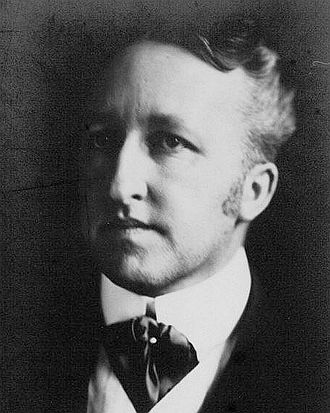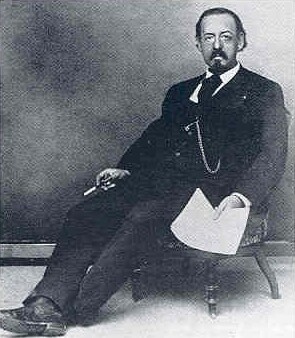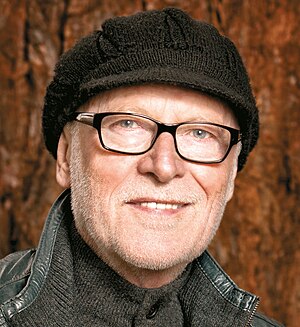Discover Your Roots
SIGN UPDiscover Your Roots
SIGN UPSiegfried is a male given name of German origin, meaning "Victory Peace." It is derived from the Germanic elements sig, which signifies "victory," and frithu, which represents "protection" or "peace." The name has a rich historical and cultural significance, being borne by legendary figures such as the dragon-slayer Sigurd and the Norse mythology hero in Richard Wagner's Ring Cycle opera. Notable individuals with the name include Siegfried Fischbacher, renowned for his performances with Siegfried and Roy, as well as Siegfried Wagner, son of Richard Wagner. The name has also been featured in various works of fiction and continues to be appreciated for its strong and noble connotations.

Siegfried Fischbacher and Roy Horn, known as Siegfried & Roy, were German-American entertainers who gained fame for their animal-based magic show. Siegfried, the magician, and Roy, the animal trainer, met in 1959 and began performing together on ships and in European clubs. Their career took off when they were invited to perform in Las Vegas in 1967. The duo headlined a show at The Mirage, which became immensely successful, making them the highest-paid entertainers in Las Vegas by 1999. Sadly, their performing career came to an abrupt end in 2003 when Roy was critically injured by a tiger during a performance. The pair's partnership and personal relationship ended with Roy's passing in 2020 from COVID-19 and Siegfried's in 2021 from pancreatic cancer. Despite their success, they faced criticism for using animals in their acts. Both men had challenging childhoods in war-torn Germany, and their love for magic and animals shaped their destinies. Siegfried and Roy's legacy lives on as they were pioneers in the world of entertainment, blending magic and wildlife, even as they faced controversies.

Siegfried Helferich Richard Wagner (6 June 1869 – 4 August 1930) was a renowned German composer and conductor, famously known as the son of the legendary composer Richard Wagner. His significant contributions to the world of music include serving as the artistic director of the Bayreuth Festival from 1908 to 1930. Born in 1869 to Richard Wagner and Cosima (née Liszt), he was deeply influenced by his lineage, being a grandson of Franz Liszt. Siegfried initially pursued architecture but ultimately dedicated himself to music after a transformative trip to Asia. His diverse body of work encompasses operas, orchestral compositions, and vocal music, reflecting his artistic prowess and versatility. Notably, he took over as the artistic director of the Bayreuth Festival, succeeding his mother, Cosima. Wagner's personal life, marked by his bisexuality and unconventional marriage to Winifred Klindworth, adds layers to his complex legacy. Despite the controversies surrounding his personal life, his musical legacy endures, leaving an indelible mark on the world of classical music. Siegfried Wagner's enduring influence and artistic contributions continue to be celebrated and studied across the globe.

Siegfried Samuel Marcus, born in the Grand Duchy of Mecklenburg-Schwerin in 1831, was a German engineer and inventor known for creating the first petrol-powered vehicle, a handcart, in 1870 while residing in Vienna, Austria. Although his experimental vehicles had little influence on car development, Marcus is credited with inventing the ignition magneto used in spark-ignition engines. He began his career as an apprentice mechanic at age 12 and later joined Siemens & Halske, an engineering company. In 1860, he established his own workshop, focusing on mechanical and electrical equipment. Despite his significant contributions to the field of engineering, Marcus faced challenges due to his Jewish ancestry, leading to the removal of his name and memorabilia under Nazi occupation. However, after World War II, his legacy was reinstated, and his car was returned to display. Despite being removed from German encyclopedias during the war, Marcus is recognized for his pioneering work in automotive technology and scientific achievements, honored with the Golden Cross of Merit by the Austro-Hungarian Emperor Franz Joseph during his lifetime.

Siegfried Breuer (24 June 1906 – 1 February 1954) was an esteemed Austrian stage and film actor, and at times, a film director and screenwriter. Born in Vienna, he was the son of Hans Breuer, a renowned opera singer and actor from Cologne, which set the stage for Siegfried's own illustrious career in the entertainment industry.Breuer's passion for performing led him to study at the Academy of Music and Performing Arts in Vienna, where he honed his craft and made his stage debut at the Volkstheater in 1924. Transitioning to the silver screen in 1939 with his debut in "Eins zu Eins," Breuer went on to captivate audiences with his talent, starring in over 50 films between 1939 and 1954. In 1950, he showcased his versatile skills by directing, writing, and starring in the film "Der Schuß durchs Fenster," collaborating with the esteemed Curd Jürgens.A notable figure in the entertainment industry, Breuer's legacy continues through his son, Siegfried Breuer Jr., and his grandchildren, Jacques Breuer and Pascal Breuer, who have also made their mark in the industry. Despite his untimely passing at the age of 47, Breuer's impact on the world of cinema remains indelible.

Siegfried Fietz, born on May 25, 1946, is a renowned German singer-songwriter, composer, music producer, and sculptor. Hailing from Berleburg and raised in Hilchenbach, Fietz's musical journey commenced at a young age when he started playing his father's violin at five and later learned to play the guitar. He underwent voice training at 15 and piano lessons at 17, followed by an exam as a church musician and organist. Fietz's exceptional talent led him to collaborate with various notable figures in the music industry, including Ivan Rebroff, Clemens Bittlinger, Petula Clark, and Bill Ramsey. Notably, his musical prowess is exemplified in his setting of Dietrich Bonhoeffer's poem "Von guten Mächten," which has become an integral part of German Protestant and Catholic hymnals. In addition to his musical achievements, Fietz delved into the world of art, creating abstract paintings and wooden sculptures. His dedication to the arts culminated in the establishment of a sculpture park in Greifenstein-Allendorf in 2015. Furthermore, he has authored insightful literature, adding depth to his multifaceted artistic contributions. Siegfried Fietz's rich legacy is a testament to his boundless creativity and enduring impact on the realms of music and art.
All images displayed on this page are sourced from Wikipedia or Wikimedia Commons.We use these images under their respective Creative Commons or public domain licenses. Wherever applicable, author attributions and license information are provided. If you believe an image is used incorrectly or outside its license terms, please contact us so that we can review and correct the issue.